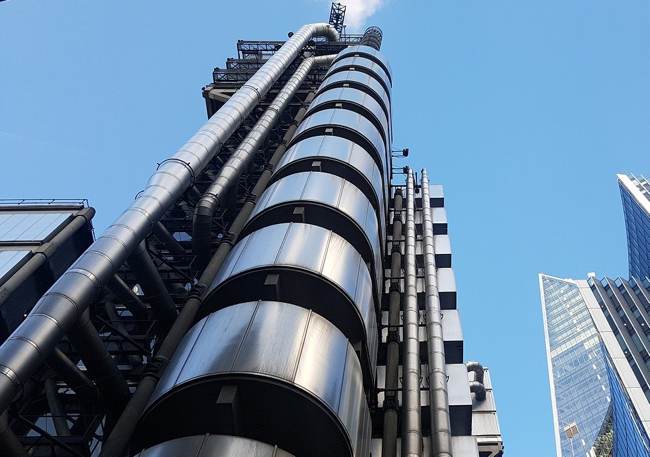Lloyd’s of London’s recently established insurance-linked securities (ILS) structure, the multi Insurance Special Purpose Vehicle (mISPV) named London Bridge Risk PCC Ltd., is for now limited in its use to quota share reinsurance transactions with a Lloyd’s member, we can report.
 The London Bridge Risk PCC Ltd. structure was approved by regulators and launched back in January 2021.
The London Bridge Risk PCC Ltd. structure was approved by regulators and launched back in January 2021.
At the time, we noticed the structure was approved for risk transfer by its regulator, but only on a limited basis and reached out to Lloyd’s for comment and explanation of what the limitations are.
A spokesperson from Lloyd’s explained that under the regulatory approval that London Bridge Risk PCC Ltd. has received, it can only enter into quota reinsurance arrangements with a Lloyd’s member.
The spokesperson told us, “It is standard practice for a PCC to have a limited scope approved and for this to be set out in an individually agreed Scope of Permissions (SOP).
“If you boil it right down, you could summarise it as being that each cell of the PCC is limited to providing quota reinsurance in a Lloyd’s Member, using a set of standardised documentation and anything wide of that would entail an application to the PRA & FCA for a Variation of Permission.”
While the use-case is limited, we suspect this meets the immediate needs of Lloyd’s, in demonstrating that it has an ILS structure in place that is designed to support its members reinsurance needs.
Remember, a quota share, or proportional reinsurance arrangement, effectively acts as a source of capacity that shares in premiums and losses, so forward-looking underwriting members can leverage this to tap investor appetite for reinsurance returns, while utilising their capital to support and provide elasticity to their other sources.
For any reinsurance transactions entered into by London Bridge Risk PCC that fall under the initial Scope of Permissions, as quota reinsurance, the creation of a new cell and entering into reinsurance with a Lloyd’s member is simply a notification process to regulators the PRA and FCA, Lloyd’s spokesperson explained.
For anything that falls outside of this initial scope, an application for a Variation on Permissions will need to be made.
So that means, should Lloyd’s resurrect its previous plans to utilise ILS or a catastrophe bond like structure to protect its central fund, while London Bridge Risk PCC could feasibly be the issuance vehicle for this, it would need the Scope of Permissions to be changed and that variation approved before it could take place.
The spokesperson explained why Lloyd’s went for the narrow scope of its ILS structure to begin, “From the beginning, Lloyd’s was looking to create a framework that was fit for purpose to support its members, based around a series of standardised documents, such as the Reinsurance Contract, the Subscription Agreement, Private Placement Memorandum, various Account Bank and Custody Agreements, as well as the PCC’s Core agreements between the PCC itself and its service providers i.e. the Insurance Manager and the Corporate Services provider. All of these standardised contracts form part of the SOP, although many of them are designed with aspects that are fully intended to vary with the specifics of any given commercial arrangement.
“The SOP also deals with other things that are fundamental to the detailed design of the PCC, in that a single Cell may only issues a single contract of reinsurance to a single Lloyd’s Member in any given year (although that same reinsurance contract may be endorsed to be able to cover subsequent Years of Account). Multiple Cells can each do this of course, so in time it is anticipated that multiple Lloyd’s Members may seek reinsurance cover in this way, as part of their capital management processes.”
The Scope of Permissions also deals with the fact any transaction entered into by the Lloyd’s ILS structure has to be fully-funded and its assets transferred to become Funds at Lloyd’s, to back the member entering into a reinsurance agreement with investors through London Bridge Risk PCC Ltd.
So, while the scope is narrower than perhaps presumed it would be, the London Bridge Risk PCC Ltd. vehicle can serve a very useful purpose as a first venture into tapping insurance-linked securities (ILS) market appetite for Lloyd’s.
Lloyd’s told us that it has been “pleased” with the level of interest shown in the London Bridge Risk PCC ILS structure since its launch and believes that the ILS structure may see its first use in advance of the year-end ‘Coming into Line’ process, which is typically in November.
A heavy catastrophe loss year, already exacerbated by the winter storms in the US, could perhaps stimulate use of the structure even quicker, we would venture.
As the standardised nature of the documentation should make it relatively fast to put a quota share arrangement through London Bridge Risk PCC into place, making Lloyd’s ILS structure perhaps an efficient way to access supportive reinsurance capital for any syndicates or members that face an outsized burden and need extra risk transfer as the year proceeds.
 View all of our Artemis Live video interviews and subscribe to our podcast.
View all of our Artemis Live video interviews and subscribe to our podcast.
All of our Artemis Live insurance-linked securities (ILS), catastrophe bonds and reinsurance video content and video interviews can be accessed online.
Our Artemis Live podcast can be subscribed to using the typical podcast services providers, including Apple, Google, Spotify and more.































